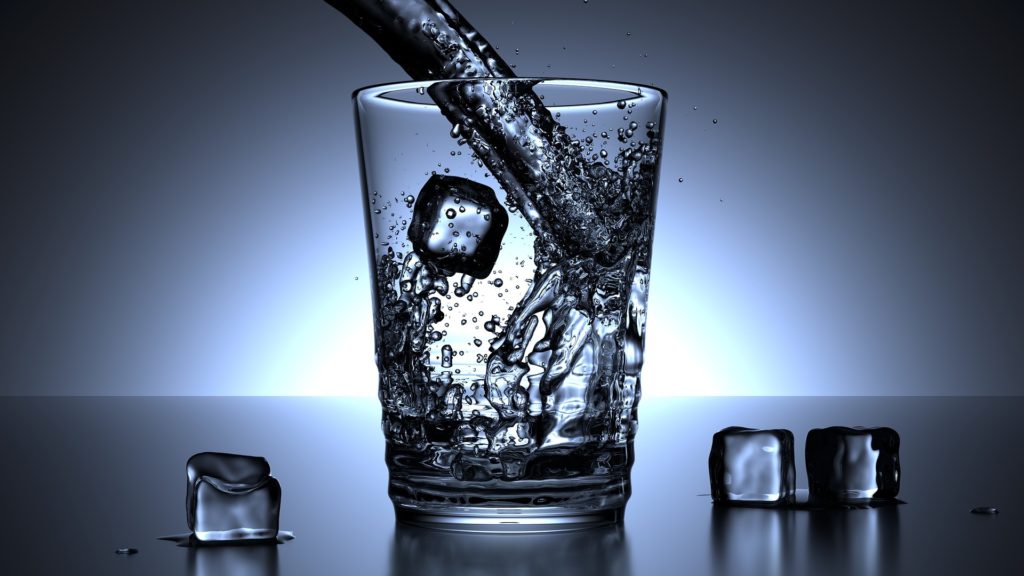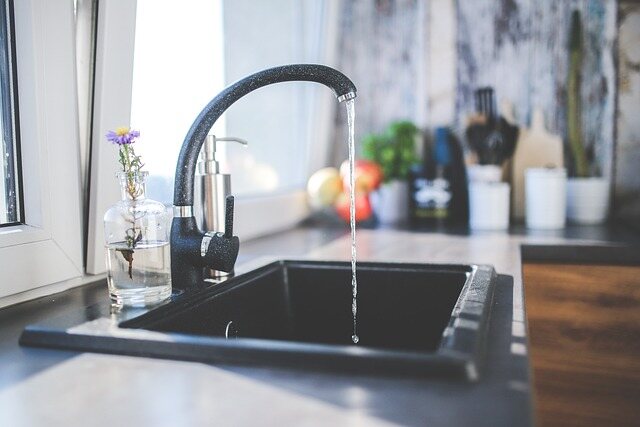
The Hidden Dangers of Tap Water: Why You Need a Whole House Water Filtration System
Water is essential for life, and most of us take it for granted that the water we drink is safe and clean. However, tap water can contain a range of contaminants that can pose serious health risks, especially if consumed over a long period of time. In this article, we will explore some of the risks associated with drinking faucet water, and examine some of the examples of how water has negatively affected people’s health in the United States.
Risks of Drinking Straight From The Tap
One of the primary risks associated with drinking straight from the tap is the presence of harmful chemicals and contaminants. Many cities in the US treat their drinking supply with chemicals such as chlorine and fluoride to kill bacteria and improve the taste and smell. While these chemicals are generally safe in small doses, exposure to high levels of chlorine or fluoride can have negative health effects. For example, exposure to high levels of chlorine can cause respiratory problems, eye irritation, and skin irritation. Similarly, exposure to high levels of fluoride can lead to dental fluorosis, a condition that causes white spots and discoloration on the teeth.
In addition to chemicals added during treatment, faucet water can also contain harmful contaminants that enter the supply from other sources. One example of this is the Love Canal toxic waste site, where a chemical waste dump leaked toxic chemicals into the groundwater, which in turn contaminated the local drinking supply. Residents of the area experienced a range of health problems, including birth defects, cancer, and neurological disorders.

Another Example of Contaminants in the Drinking Supply
Another example of contaminants in the drinking supply is the Camp Lejeune military base in North Carolina. For decades, the drinking water at the base was contaminated with chemicals such as trichloroethylene (TCE) and perchloroethylene (PCE), which are known carcinogens. As a result, many military personnel and their families who lived on the base developed serious illnesses, including cancer, leukemia, and birth defects.
More recently, in 2014, a chemical spill occurred in the Elk River in West Virginia, contaminating the drinking supply for over 300,000 people. The spill was caused by a chemical used in coal processing and resulted in widespread illness and a state of emergency.
Another Concern With Drinking From the Tap
Another concern with drinking from the faucet is that it can contain bacteria and other microorganisms that can cause illness. One example of this is the Milwaukee Cryptosporidium outbreak, which occurred in 1993 when over 400,000 people fell ill with Cryptosporidiosis, a parasitic infection caused by the Cryptosporidium protozoan. The outbreak was traced back to contaminated water from the city’s treatment plant.
While incidents like these are relatively rare, they highlight the importance of ensuring that water is properly treated and monitored to prevent illness outbreaks. Even low levels of exposure to harmful chemicals or microorganisms can have negative health effects, particularly if consumed over a long period of time.
To mitigate these risks, many people choose to use whole house water filter systems like a reverse osmosis system to remove contaminants from their drinking supply. A home water filtration system can be particularly useful for people with weakened immune systems, allergies, or other health concerns, as well as for families with young children or pregnant women.
What About The More Common Contaminants That May Be Present?
But these are just a few examples of how drinking straight from the faucet can negatively affect people’s health. But what about the more common contaminants that may be present? Let’s take a closer look at some of the most common contaminants found in water and their potential health effects.
Lead: Lead is a toxic metal that can cause serious health problems, especially in young children and pregnant women. Exposure to lead can lead to developmental problems, learning disabilities, and behavioral problems.
Chromium: Chromium is a heavy metal that can be found in industrial wastewater and can enter the supply through leakage or accidental spills. Exposure to high levels of chromium can cause skin irritation, lung cancer, and other serious health problems.
Mercury: Mercury is a toxic metal that also can be found in industrial wastewater and can enter the water supply through leakage or accidental spills. Exposure to high levels of mercury can cause neurological problems, kidney damage, and other serious health problems.
Pesticides and herbicides: Pesticides and herbicides are chemicals used in agriculture to control pests and weeds. These chemicals can enter the supply through runoff and can have negative effects on human health if consumed over a long period of time. Exposure to pesticides and herbicides has been linked to a range of health problems, including cancer, reproductive problems, and neurological disorders.
In addition to these specific contaminants, tapwater can also contain a range of other impurities and pollutants, such as bacteria, viruses, and other microorganisms. These contaminants can cause a range of health problems, from mild stomach upset to serious illnesses such as hepatitis and cholera.

Protect Yourself From The Faucet
Given these potential health risks, it is important to take steps to ensure that your faucet water is as safe as possible. One way to do this is to install an under sink water filter. A filter system can remove a range of contaminants, including chlorine, lead, and other heavy metals, pesticides and herbicides, and microorganisms.
Another way to protect yourself from contaminated H2O is to be aware of the quality of your local supply. Most cities in the US are required to provide annual quality reports that detail the levels of contaminants present in the supply. You can request a copy of your H2O quality report from your local provider or find it online.
More Ways To Protect Yourself
In addition to installing a home water filtration system and checking your local quality report, there are other steps you can take to protect yourself These include:
Boiling your water: Boiling water can help kill bacteria and other microorganisms that may be present. However, boiling does not remove chemical contaminants, so it may not be effective for all types of impurities.
Using bottled water: Bottled water is generally considered safe to drink, but it can be expensive and contribute to environmental waste. Additionally, bottled may not be as strictly regulated as tap, so it is important to do your research before choosing a brand.
Using a testing kit: A water testing kit can help you determine the levels of contaminants present These kits are relatively inexpensive and can be purchased online or at a home improvement store.
In addition to the steps outlined in the previous section, one of the best ways to ensure that your tap is safe to drink is to install a home water filtration system. A water filter system can provide numerous benefits, both for your health and for the health of your plumbing system.
One of the primary benefits of a whole house water filter system is that it can remove a range of contaminants. Depending on the type of filtration system you choose, it can remove everything from chlorine and lead to pesticides and herbicides, as well as bacteria and other microorganisms.
This can provide peace of mind for you and your family, knowing that your H2O is clean and safe to drink.
Other Benefits Of Home Water Filter Systems
Another benefit of a home water filter system is that it can help protect your plumbing system. Over time, contaminants and impurities in tap can build up in your pipes, leading to clogs and other plumbing problems. By removing these impurities from your faucet water, a filter system can help extend the lifespan of your plumbing system, reducing the need for costly repairs and replacements down the line.
Additionally, a whole house water filtration system can help improve the taste and odor of your tapwater. Depending on the contaminants present in your local supply, you may notice a range of unpleasant tastes and odors, from a chlorine-like taste to a musty odor. A under sink filter system can remove these impurities, leaving you with clean, fresh-tasting water that is free of unpleasant odors.
Overall, a home water filtration system is a smart investment for any homeowner concerned about their health or the quality coming from their faucets. Not only can it help protect your health and the health of your plumbing system, but it can also provide numerous other benefits, from better-tasting H2O to reduced environmental waste.
Reverse Osmosis
Reverse osmosis (RO) is a purification process that uses a semipermeable membrane to remove impurities. It works by applying pressure to push liquid through the membrane while leaving behind contaminants, resulting in clean, purified H2O.
The process of reverse osmosis typically involves several stages or steps, which may include pre-filtration, the reverse osmosis membrane, and post-filtration. Here is a step-by-step overview of how a reverse osmosis water filter works:
Pre-filtration: Before liquid enters the reverse osmosis membrane, it usually goes through pre-filtration to remove larger particles, such as sediment, rust, and other visible impurities. This pre-filtration step helps to protect the reverse osmosis membrane from damage and ensures optimal performance.
Reverse osmosis membrane: The heart of the reverse osmosis system is the semipermeable membrane. It is designed to allow H2O molecules to pass through while blocking the passage of most dissolved solids, such as salts, minerals, heavy metals, and other contaminants. The pressure applied to the water forces it to pass through the membrane, leaving behind the impurities on one side of the membrane, which are then flushed away.
Post-filtration: After passing through the reverse osmosis membrane, the purified liquid may go through a post-filtration stage to further polish the water and remove any remaining impurities. This may involve passing it through additional filters, such as activated carbon filters, to remove any residual tastes, odors, or chemicals.
Storage and dispensing: Once it has gone through the reverse osmosis process and any additional post-filtration, it is usually stored in a storage tank until it is needed. The purified water can then be dispensed through a dedicated faucet or used for various purposes, such as drinking, cooking, and other household needs.
It’s important to note that not all reverse osmosis systems are the same, and the specific design and components of the system can vary depending on the manufacturer and model. Some systems may also include additional stages or features, such as UV sterilization or remineralization, to further enhance the quality.
Reverse osmosis filters are highly effective at removing a wide range of contaminants, including dissolved solids, salts, minerals, heavy metals, bacteria, viruses, and other impurities. They are commonly used in residential and commercial settings where high-quality, purified water is desired for drinking, cooking, and other uses.
Overall, the process of reverse osmosis is a sophisticated and reliable method for purification providing clean, safe, and great-tasting results for your home or business. If you are considering a filter system for your home, a reverse osmosis system may be an excellent choice to ensure that you and your family have access to a high-quality, purified drinking supply.
At Advantage Plumbing & Drain Solutions...
At Advantage Plumbing & Drain Solutions, we understand the importance of having a clean, safe drinking supply. We believe that every homeowner deserves access to clean, safe water, and we are committed to helping our customers achieve this goal. That’s why we offer competitive pricing, expert installation services, and ongoing maintenance and support to ensure that your water filtration system continues to provide clean, safe water for years to come.
If you’re concerned about the quality of your tap water, we encourage you to contact us today to learn more about our home filter systems and how they can benefit your home and your health. With Advantage Plumbing & Drain Solutions on your side, you can enjoy the peace of mind that comes with knowing that your tap water is safe, clean, and free of harmful contaminants.
If you have questions or would like to schedule an appointment to get crystal clear H2O flowing straight from your faucet, call our plumbing company today at (937) 446-6909